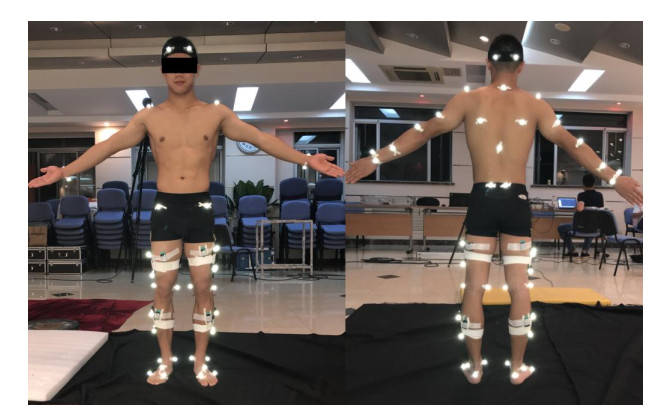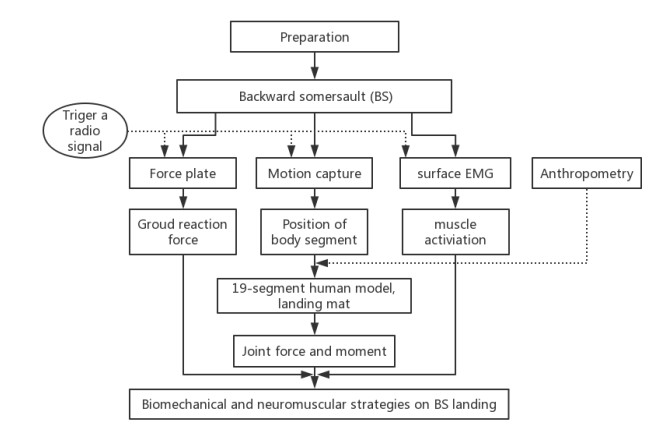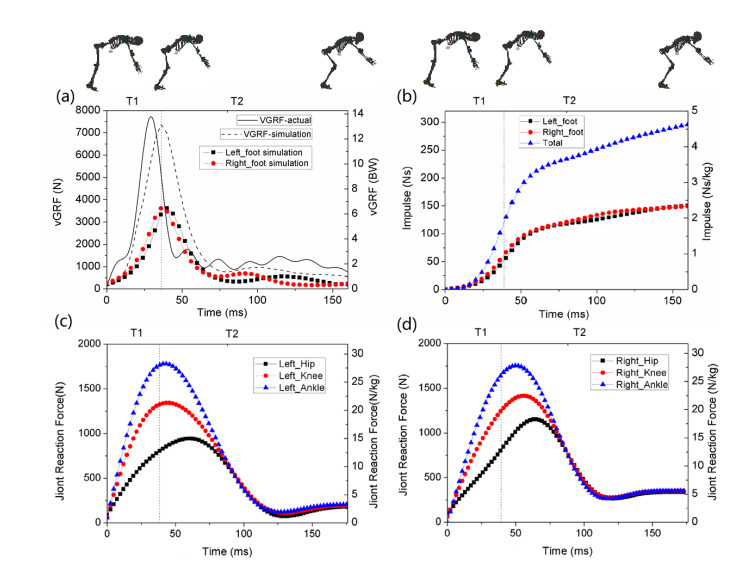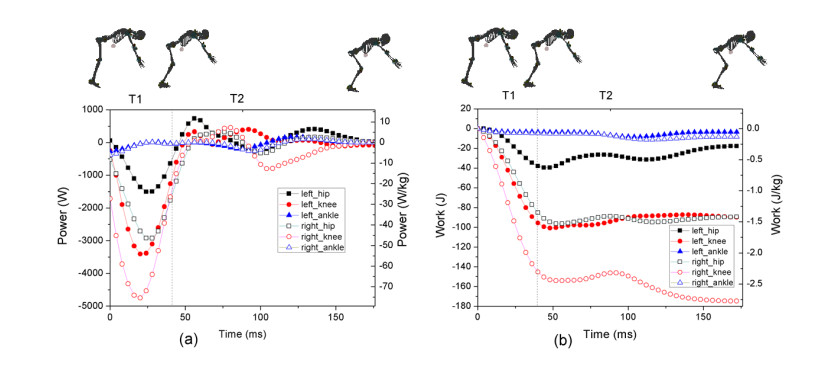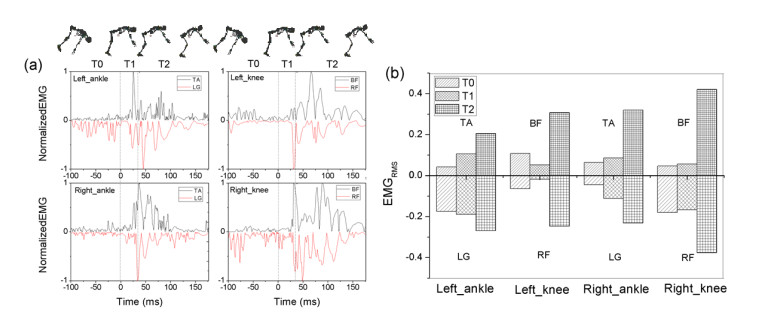Point-of-sale (POS) advertising at retail stores is one of the key marketing avenues used by the tobacco industry. The United States Surgeon General urges actions to eliminate POS tobacco advertisements because of their influence on youth smoking. Many youth empowerment programs are implemented to address tobacco industry marketing influences, including POS tobacco advertisements. While youth are asked to take on such collective action, little is known regarding their perceptions and understanding of tobacco industry marketing influences and related advocacy activities. This mixed methods study examined Oklahoma’s tobacco control youth empowerment program members’ perceptions of tobacco industry marketing influences. Four focus groups were held with active program members from rural and urban areas. Overall, the focus group participants viewed the program as purposeful, as an avenue to help others, and as a way to make a difference. Specifically, the older participants (median age = 18 years) identified tobacco industry marketing influences such as POS, movies, and magazine advertisements and reported participating in activities that counter POS tobacco advertisements at retail stores. Likewise younger participants (median age = 16 years), identified similar tobacco industry marketing influences, but also included tobacco use by friends and family as tobacco industry marketing influences. Moreover, the younger participants did not report engaging in activities that addressed POS tobacco advertisements. The study results suggest that the empowerment program should tailor its programming, training, materials, and activities with input from youth of various ages. Thoughtfully developed messages and specific activities can truly empower youth and maximize their contribution as change agents who address POS or other initiatives at the retail environments to prevent chronic diseases.
1.
Introduction
Every event in gymnastics ends with a landing. In gymnastics competition landing is a crucial factor that affects the final result. However, previous studies indicated a meager rate of landing success in gymnastics, with an error rate as high as 71.9% on floor exercise as shown by 97 men gymnasts in 2004 [1]. Due to aesthetics, the Code of Points of the International Federation of Gymnastics (FIG) does not allow gymnasts to show ground adjustments of their feet, unsteadiness, incomplete twist, loss of balance, and fall [2]. The flexion of the lower limb joints should not be too much to keep an aesthetic and safe posture during dismount. These requirements suggest that gymnasts are trained to use a pattern of stiff landing [3], and their lower limb joints are loaded with higher loadings compared with non-gymnasts [4]. Furthermore, gymnasts are used to loading a tremendous vertical ground reaction force (vGRF) during the landing. The peak vGRF (PvGRF) of forward somersault is 7.6–15.8 body weight (BW), that of backward somersault (BS) is 7.1–13.2 BW [5]. Besides, gymnasts have a high injury risk of the lower limb in dismount [6]. A study has indicated that injuries to the lower limb during competition and practice account for 53% and 69%, respectively, of the total amount of injuries [7].
Gymnasts should perform every landing as symmetrically as possible. Asymmetrical loading increases lower extremity injury risk [8]. Sabick et al. [9] suggested that gymnasts have more symmetry in vGRF of landing than non-gymnasts, and the excellent symmetry between the legs in gymnasts is likely due to the equally distributed load among the lower limbs to decrease the risk of injury. In contrast to other sports, such as running or ball games, the dismount in gymnastics requires the execution of prescribed movement patterns and a symmetric landing [10]. Therefore, the landing strategy for the entire body and multi-joint movement used by gymnasts may be more complex than that landing in other sports. However, limited studies have used the biomechanical response of lower limbs to analyze the symmetry in the landing of gymnasts.
Landing is a complex movement under neuromuscular control, involving prediction of the space-time of the touchdown and magnitude of the vGRF. Meanwhile, the angular displacement and position of multi-joints during landing are controlled by the synergy of antagonist-agonist muscles [4]. Leg and joint stiffness of the lower limbs is the most critical regulatory factor during landing. This stiffness is modulated by appropriate muscles pre-activation prior to touchdown during landing [11]. It was reported that the average stiffness of the overall musculoskeletal system is represented by leg stiffness and the mechanics and kinematics of the body's interaction with the ground could also be affected by this stiffness [12]. However, how joint stiffness and the neuromuscular system are modulated during gymnastics landing is unclear. Furthermore, previous studies generally analyzed the whole impact phase that was defined from the initial ground contact to the maximal knee flexion [4] or the maximal descending height of body mass center [13], or the local minima in the vertical reaction force [14], and the first 100 ms [15]. However, there could be different and biomechanical and neuromuscular strategies of the lower limbs during initial and terminal impact-phases of the landing, so we attempt to quantify the kinematics, kinetics, and electromyogram (EMG) characteristics of the lower limbs during the different impact-phases. The results will help elucidate the process of gymnastics landing, energy dissipation, symmetry, and injury mechanism of the lower limbs. Given the ethical limitations, using an in-vivo implanted sensor to test the internal load of the human lower limb is complicated. However, this issue could be solved by computer simulation of movements of human body. Computer simulation of the human body provides a practical approach to explore the characteristics of body motion and has been widely used to analyze body movement in humans [16].
BS is considered a fundamental skill that competitive gymnasts should a master is used very frequently in gymnastics training and competitions, and is also the basis for developing difficulty levels in movement and combined motion. This study aimed to investigate the biomechanical and neuromuscular strategies of motor control on BS landing. We hypothesized that (1) the flexion of lower limb joints is an active process at initial ground contact, and (2) the gymnast would exhibit different symmetry in kinematics, kinetics, and EMGs recordings between the left and right legs during the landing.
2.
Materials and method
2.1. Participant
The participant was an international-level gymnast from the Chinese national team competing in World Cups and Championships (male, mass: 63 kg, age: 17 years), and with no musculoskeletal injuries for at least 6 months prior. A total of 31 individual anthropometric parameters, such as standing height and waist depth, were measured (Table 1). The gymnast read and provided signed informed consent, and the study conformed to the protocol of the Ethical Advisory Committee of China Institute of Sport Science (CISS).
2.2. Instrumentation
Kinematic data were collected with a 9-camera Qualisys Oqus motion capture system at 250 Hz. Retro reflective markers (16 mm diameter) were placed at the head, cervical vertebrae (CV7), scapula-inferior angle, thoracic vertebrae (TV10), shoulder, elbow, wrist, anterior superior iliac spine, posterior superior iliac spine, knee, ankle, metatarsal-phalangeal joints, heel, and toes on both sides of the body (Figure 1), the place of these markers were referenced from the CAST full body marker set [17]. A Kistler force plate located beneath a landing mat (5 cm thick), which has little influence on the research since it has been reported that there is less than 5% difference in GRF when the thickness is up to 12 cm thick [14], was used to collect GRF data (1000 Hz), and the surrounding floor was an ethylene-vinyl acetate insole mat. Muscle activation patterns were recorded (surface EMGs, 2000 Hz), with a gain of 3000, from the rectus femoris (RF), biceps femoris (BF), tibialis anterior (TA), and lateral gastrocnemius (LG) on the two lower limbs of the gymnast using a portable DELSYS TrignoTM wireless EMGs system, the place of these EMG sensors were referenced from the SENIAM guidelines [18]. The EMG sensors were fixed on the skin using specialized double-sided tape and medical tape. The Qualisys Oqus motion capture system, the force plate, and the surface EMGs system were all synchronized using a radio signal (Figure 2).
2.3. Procedures
Data collection was conducted in the laboratory of CISS. The gymnast initially performed a warm-up exercise (15 min of jogging, skipping, and stretching). Subsequently, the markers and surface electrodes were placed. The gymnast performed three trials of BS without taking a step or hop. The BS was initiated by jumping from the ground next to the force plate with bare feet, and the best trial was qualitatively judged by two national-level coaches using the Code of Points of the FIG. Meanwhile, the 3D motion data, EMGs, and vGRF data were simultaneously being recorded separately by the Qualisys Oqus motion capture system, the surface EMGs system, and the force plate respectively.
2.4. Biomechanical modeling and simulations
The GeBod (Generator of Body Data) database (BRG.LifeMODTM) was used to develop a 19-segment rigid-body model based on age, mass, and personalized anthropometric data of the gymnast (Table 1). The measurement parameters used in GeBod are detailed by Cheng et al. [19]. These anthropometrics measures were used to generate a personalized model. The model consisted of the head, neck, upper torso, central torso, lower torso, scapulas, upper arms, lower arms, hands, upper legs, lower legs, feet, and 18 human joints [20], and computer simulation was performed using the landing 3D motion data. A model of gymnastics matting with a dimension of 2 × 2 × 0.05 m (length × width × height) was developed using the MSC.ADAMS (MSC Software Corp. acronym of Automated Dynamic Analysis of Mechanical Systems) software. The base of the mechanical properties of the landing mat was obtained by an optimization algorithm (equations (1) and (2)) [21].
where ${{x}_{i}}$ is the kinematic data from real performance, ${{y}_{i}}$ is the kinematic data from computer simulation, and $\Delta \delta $ is RMS (root mean square) error between real performance and simulation; $\Delta T$ is expressed as RMS error of time to peak vGRF; $\Delta \nu GRF$ is expressed as RMS error of vertical ground reaction forces; $\Delta Joint\ angles$ is expressed as RMS error of joint angles of lower limbs; and n is the number of data points with each curve; the best optimal parameters are determined when S is the minimum.
The model was validated by the curve of the dynamic changes (equation (3)) [21].
where m is the number of all curves, n is the number of data in each curve, ${x_{ij}}$ is expressed as the j-th data of the i-th curve, ${\bar x}_{j}$ is the average of the j -th data of all curves, and $\bar x$ is the overall average of data of all curves. To examine the reliability of the model, coefficients of multiple correlation (CMC) between the simulation and actual results from the participant were calculated, with 0.25–0.50, 0.50–0.75, and > 0.75, indicating poor, moderate, and good correlations, respectively [22]. The actual results were recorded during the real performance of the gymnast using the motion capture and force plate, including joint angles of the lower limbs and vGRF.
2.5. Data analysis
Landing impact phase was defined from the touchdown to vGRF equaling to BW, which is after PvGRF. The touchdown was identified as the first frame when vGRF exceeded 10 N [4] on professional software (BioWare, Kistler Instrument Ltd., Switzerland). Meanwhile, the impact phase was divided into two phases (T1: initial impact-phase, from the first touchdown to the PvGRF; T2: terminal impact-phase, from the PvGRF to the vGRF equaling to BW). The joint angles were calculated between two lines in space base on three trajectories, and selected the trajectories that we want to match with the markers. The data for PvGRF was normalized based on the body weight of the gymnast, and impulse of a force was calculated as the integral of the vGRF over its period of application. Power approach was used to determine joint work by quantifying joint velocities (angular) and joint kinetics (torque). Support moment (Ms) is the total extensor pattern at all three joints of the lower limb [23]. Raw EMGs signals were full-wave rectified, and band-pass filtered with a Butterworth filter with cut off frequencies at 10–400 Hz [24]. Pre-activation phase was determined as 100 ms preceding touchdown [25]. The root mean square of EMGs (EMGRMS) was calculated in the pre-activated (T0) and two impact phases of landing (T1 and T2) (equation (4)). The EMGs signals were normalized by peak EMG in the landing phase. In each sub-phase, antagonist–agonist coactivation was calculated as the TA to LG normalized EMGs for the ankle, and the BF to RF normalized EMGs for the knee [26].
where EMG is the value of the EMG signal at each moment of time (t), and T represents the duration of the analyzed signal.
The absolute symmetry index (ASI) was used to calculate the symmetry between the feet (equation (5)).
where xl and xr are the values of the landing variable for the left and right foot, respectively. When ASI = 0, the landing is symmetrical. ASI of less than 10% is an acceptable degree of symmetry [27].
The angles of the two lower limb joints were recorded on the sagittal-plane during the landing. These joint torques were calculated with computer simulation using the software based on the lagrangian formalism [23]. To calculate joint stiffness, the following equation (6) was used:
where ${\Delta {\rm{M}}}$ is the change of the joint torque, and ${\Delta {\rm{ \mathsf{ θ} }}}$ is the angular displacement of the joint flexion [4].
3.
Results
3.1. Kinematics of landing
The lower limb joints flexed considerably rapidly, and flexions of the hip, knee, and ankle (dorsiflexion) changed by 8°, 20°, and 18°, respectively, on average during T1 (Figure 3). However, the flexion of these joints maintained at around 90º, 120º, and 60º, respectively, during T2 (Figure 3). The ASIs of flexion of these joints were less than 10% (except the ankle during T2, 10.2%). The flexion of the hips, knees, and ankles by simulation correlated well to the actual measured results in the angles of left knee (CMC = 0.95), right knee (CMC = 0.93), and left and right ankles (CMC = 0.85).
3.2. Kinetics of landing
The CMC of the simulated and actual measured vGRF was 0.86, and the measured PvGRF was 12.5 BW. The difference between the measured and simulated PvGRF (11.9 BW) was 4.6%, and the time for the simulated and measured vGRFs to reach a peak differed by 6 ms (Figure 4a). The simulated PvGRFs of the left and right feet were 3614 N and 3610 N, respectively. The impulse of vGRF was shaped like an S curve (Figure 4b), and the impulse increment was the fastest before and after the PvGRF. The joint reaction force (JRF) of the ankles, knees, and hips rapidly increased during T1 (Figure 4c, Figure 4b). In comparison to the PvGRF, peak JRFs of the left ankle, knee, and hip were delayed by 6, 10, and 20 ms, with a delay of 14, 18, and 26 ms for the right side, respectively. The peak JRFs were not reached until T2. Furthermore, hips and knees were loaded by the flexor torque during T1 and by the extensor torque during T2 (Figure 5). The power and work of the hips and knees were considerably altered during T1, and the power and work increment of the joints tended to be relatively stable during T2 (Figure 6). Besides, the increment in the joint stiffness of the hips, knees, and ankles were 2.3, 12.3 and 7.3-fold, respectively, from T1 to T2 (Table 2). Besides, the ASIs of the kinetics (including vGRF, JRF, torque, power, work and stiffness) of the lower limb joints were all more than 10% (Table 3).
3.3. Electromyography
The EMGs of all examined muscles (RF, BF, TA, and LG of the both lower limbs) were activated during T0, and the peak EMGs were all in T2 (Figure 7a), except that of the TA of the left leg. Furthermore, the EMGRMS approximately showed an elevating trend from T0 to T2 and increased dramatically during T2 (average 4.8-fold larger than that during T1) (Figure 7b). More specifically, the coactivation of the knees and ankles all ranged between 0.76 and 1.38 during T2, which involved the highest activation level, and their ASIs were more than 10% during T1 and T2 (Table 3).
4.
Discussion
This work is the first to comprehensively investigate the biomechanical and neuromuscular strategies during BS landing performed by an international level gymnast during initial (T1) and terminal (T2) impact-phase. The lower limb joints showed flexor torque in T1 and extensor torque in T2; during T2, the JRFs, joint torques, joint stiffness, and EMGs were higher than those in T1, but the flexions of the lower limb joints in T2 were less. Furthermore, these flexions showed symmetry between the left and right legs during the landing, but the kinetics and EMGs data were asymmetrical.
The model successfully reproduced the joint angles and kinetics characteristic of the BS landing. The measured flexion of the lower limb joints and vGRF were close to the simulation results. The CMCs presented high correlation (>0.75). Furthermore, the difference between the simulated (11.9 BW) and measured PvGRF (12.5 BW) was 4.6%. The PvGRF was consistent with that of previous studies (7.1–13.2 BW) [5]. Therefore, the results suggested the human model was valid.
Neuromuscular pre-activation plays a significant role in the landing strategy. The RF, BF, LG, and TA of the lower limbs were activated during T0. Previous studies also showed that the LG, TA, and vastus lateralis of gymnasts were all in the pre-activated phase before touchdown and that the activation level of gymnasts was higher than that of non-gymnasts [4].
As hypothesized, the landing strategy of the gymnast was to actively flex his lower limb joints in the initial impact-phase (T1). Flexion and flexor torques of the hips, knees, and ankles rapidly increased during T1. The lower limb joints were suggested to actively flex to absorb considerable kinetic energy. An appropriate lower limb joint angle during the dismount of touchdown raises the ability of the muscles to absorb energy [28]. In this study, the time to PvGRF was 30 ms, which was close to that in our previous results [21]. The energy during landing can be absorbed by athletes through flexion motion of the lower limb joints [15]. More impact energy could also be dissipated with greater flexion angle of the lower limb joints [3,5]. However, the flexion angle of these joints should be minimized during landing because of the restriction of gymnastic regulations [2]. Thus, energy dissipation was probably limited during T1 for the gymnast.
The landing strategy of the gymnast was to dissipate the landing impact, controlling the flexion movements of the lower limbs in a small range during the terminal impact-phase (T2). The angle of the lower limb joints changed by a lesser amount, indicating that the body tended to stabilize. T2 took a relatively long time (approximately five times of T1), but increment in the impulses of the lower limb was less than one-third of that in T1, thus the landing impact was well dissipated. Furthermore, the JRF of the ankles, knees, and hips rapidly increased during T1, but their peaks were reached during T2. This result indicates the delay effect of the JRF by 14-26 ms after PvGRF and that the conduction of vGRF to the human body was a gradual process from the ankle to the knee and then to the hip. Therefore, the force was successively reduced, and dissipating of the landing impact was realized by the excellent coordination of the three lower limb joints to adequately protect the trunk and cephalic organs [29]. Moreover, the support moment is the total extensor pattern at all three joints, and therefore it contributes to defending against the landing-induced body collapse [23]. The eccentric work of the knee joint was maximum, followed by the hip and ankle joints, which was consistent with the overall trend of the results during the drop landing in previous studies [6]. On the other hand, the stiffness and EMGRMS of both the lower limb joints increased several times from T1 to T2. Therefore, the co-contraction could increase joint stiffness, thereby limiting the flexion of the lower limb joints to achieve more stable gymnastic landing performance. Park and Durand [30] suggested that joint stiffness is nearly controlled by the level of muscle co-contraction. The ankle needed to bear the maximum impact load, but lack of effective energy dissipation due to minimum flexion angle and eccentric work. Therefore, we speculated that the risk of injury of the ankle was probably the highest during gymnastic landing among the lower limb joints, which was consistent with the findings of an epidemiological investigation [29].
The gymnast exhibited a different symmetry in kinematics, kinetics, and EMGs between the left and right legs during the landing. During the entire impact phase of the landing (T1 and T2), the difference between flexions of both hip and knee joints was within 5°, and the difference in ankle dorsiflexion was within 10°. Furthermore, the ASIs of flexion of the lower limb joints were less than 10%. These results showed an excellent landing symmetry in sports performance. However, the ASIs of the kinetics (including vGRF, JRF, torque, power, work and stiffness) and EMGs (coactivation) of the lower limb joints were all more than 10%. The ASI of the power of ankle was even more than 200% in T2. Sabick et al. [9] speculated that a good landing symmetry between the legs in gymnasts is likely due to the equal distribution of load among the lower limbs. However, similar results were not noted in this study. This could be an indication that the internal load of the lower limb joints can efficiently modulate the landing symmetry. Van Emmerik et al. [31] suggested that the human dynamic system plays a regulatory role in the completion of movement. The change in multiple joint forces can affect the athletes' kinematic performance during sprints [32]. Therefore, a symmetrical landing could be better performed by modulating the kinetics and EMGs of the lower limbs, including vGRF, JRF, torque, stiffness, power, and eccentric work of multi-joints, and synergy of antagonist and agonist muscles.
This study had two main limitations. First, the computer simulation model was a multi-rigid body without considering the shock of soft tissues. Second, only one participant was included in the study, but the landing was comprehensively analyzed using kinematic, kinetic, and EMGs data from the international-level gymnast during initial and terminal impact-phases, these characteristics that is one of the representatives of excellent gymnastic landings. Nonetheless, most results of the model were in line with those obtained in experimental studies. Detailed musculoskeletal models may enhance our understanding of the loadings of the lower limb joints, particularly related to soft tissues. Future studies might focus on how more gymnasts manage their landing motion to ensure symmetry.
5.
Conclusion
An international-level gymnast employs complex biomechanical and neuromuscular landing strategies to perform BS successfully. The relevant lower limb muscles initially pre-activate before touchdown to adequately prepare for landing. Subsequently, the gymnast actively flexes the lower limb joints at initial ground contact and then struggles to extend the joints to dissipate the landing impact and maintain an unchanged posture. Meanwhile, the gymnast may modulate lower limb joints loading and muscle activation of both the lower limbs to achieve landing symmetry. The findings of this study may expand our knowledge about gymnastics landing.
Acknowledgments
This study was supported by the National Key R & D Program of China (No. 2017YFC0803802), the National Natural Science Foundation of China (No. 11672080, 31700815), and the Chongqing Natural Science Foundation of China under Grant (No. cstc2018jcyjAX0086). The authors are thankful to the Chinese national gymnastics team for their valuable collaboration.
Conflict of interest
This manuscript has not been published or presented elsewhere in part or in entirety and is not under consideration by another journal. All authors have read and approve the content of the manuscript. The study participant provided informed consent, and the study design was approved by the appropriate ethics review board. We have read and understood your journal's policies, and we believe that neither the manuscript nor the study violates any of these. There are no conflicts of interest to declare.









 DownLoad:
DownLoad:
